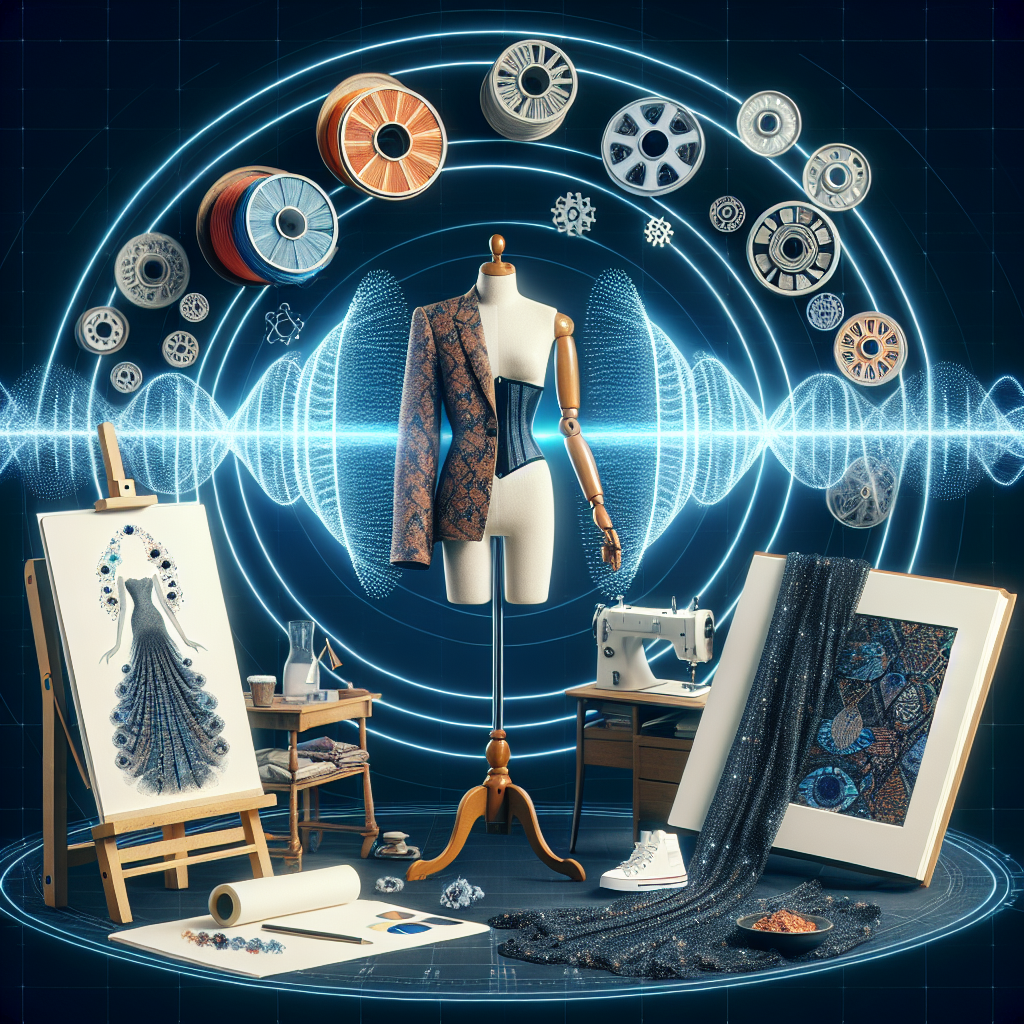Generative artificial intelligence, or GAI, is a cutting-edge technology that is revolutionizing the fashion industry in ways that were previously unimaginable. By using algorithms to create new designs, patterns, and styles, GAI is changing the way that fashion is created, produced, and consumed. In this article, we will explore how generative AI is reshaping the fashion industry and revolutionizing the way we think about clothing and style.
One of the most significant ways that generative AI is revolutionizing the fashion industry is by enabling designers to create new and innovative designs at a rapid pace. Traditionally, the design process in fashion has been time-consuming and labor-intensive, requiring designers to sketch, prototype, and revise their designs multiple times before finalizing a product. With generative AI, designers can input parameters such as color, fabric, and style preferences, and the algorithm will generate a multitude of design options in a fraction of the time it would take a human designer.
This speed and efficiency in the design process allow fashion brands to stay ahead of trends and produce new collections more frequently. By using generative AI to create designs, brands can quickly respond to changing consumer preferences and market demands, ensuring that they are always offering fresh and exciting products to their customers.
In addition to speeding up the design process, generative AI is also helping to reduce waste in the fashion industry. By creating virtual prototypes and using digital sampling techniques, designers can test out new designs without the need for physical materials. This not only saves time and money but also reduces the environmental impact of the fashion industry by cutting down on the amount of fabric and other materials that are wasted in the design process.
Furthermore, generative AI is enabling fashion brands to personalize their products in ways that were previously impossible. By analyzing data on consumer preferences, purchasing history, and social media activity, brands can use generative AI to create customized designs that cater to the individual tastes of their customers. This level of personalization not only enhances the customer experience but also helps to build brand loyalty and drive sales.
Another way that generative AI is revolutionizing the fashion industry is through the creation of virtual influencers and models. By using AI to generate lifelike images and videos of virtual models wearing their clothing, brands can showcase their products in a more engaging and dynamic way. Virtual influencers, such as Lil Miquela and Shudu Gram, have become popular figures in the fashion world, attracting millions of followers and collaborations with major brands.
Virtual models offer a way for brands to showcase their products without the need for traditional photo shoots or runway shows, saving time and money in the process. Additionally, virtual influencers can be used to promote inclusivity and diversity in the fashion industry by representing a broader range of body types, skin tones, and styles than traditional human models.
Generative AI is also transforming the way that consumers shop for clothing and accessories. By using AI-powered recommendation engines, fashion brands can provide personalized style suggestions to shoppers based on their preferences, browsing history, and purchase behavior. This helps consumers discover new products that align with their individual tastes and ensures that they have a more enjoyable and efficient shopping experience.
Furthermore, generative AI is being used to create virtual fitting rooms and augmented reality (AR) experiences that allow customers to try on clothing virtually before making a purchase. This technology not only reduces the need for physical fitting rooms but also helps to bridge the gap between the online and offline shopping experience, making it easier for consumers to find the perfect fit and style.
In conclusion, generative AI is revolutionizing the fashion industry in numerous ways, from speeding up the design process and reducing waste to enabling personalization and transforming the shopping experience. By harnessing the power of algorithms and machine learning, fashion brands are able to create new and innovative designs, engage with customers in more meaningful ways, and stay ahead of trends in a rapidly evolving market. As generative AI continues to advance, we can expect to see even more exciting developments in the fashion industry that will reshape the way we think about clothing and style.
—
**FAQs**
**What is generative AI in the fashion industry?**
Generative artificial intelligence, or GAI, is a technology that uses algorithms to create new designs, patterns, and styles in the fashion industry. By inputting parameters such as color, fabric, and style preferences, designers can use generative AI to generate a multitude of design options in a fraction of the time it would take a human designer.
**How is generative AI revolutionizing the fashion industry?**
Generative AI is revolutionizing the fashion industry by speeding up the design process, reducing waste, enabling personalization, and transforming the shopping experience. By using algorithms to create new and innovative designs, fashion brands can stay ahead of trends, respond to consumer preferences, and offer fresh and exciting products to their customers.
**What are some examples of generative AI in the fashion industry?**
Some examples of generative AI in the fashion industry include virtual fitting rooms, AI-powered recommendation engines, virtual influencers, and virtual models. These technologies are helping to create a more engaging and dynamic shopping experience for consumers, as well as enabling brands to showcase their products in new and innovative ways.
**How does generative AI help reduce waste in the fashion industry?**
Generative AI helps reduce waste in the fashion industry by creating virtual prototypes and using digital sampling techniques to test out new designs without the need for physical materials. This reduces the environmental impact of the fashion industry by cutting down on the amount of fabric and other materials that are wasted in the design process.

